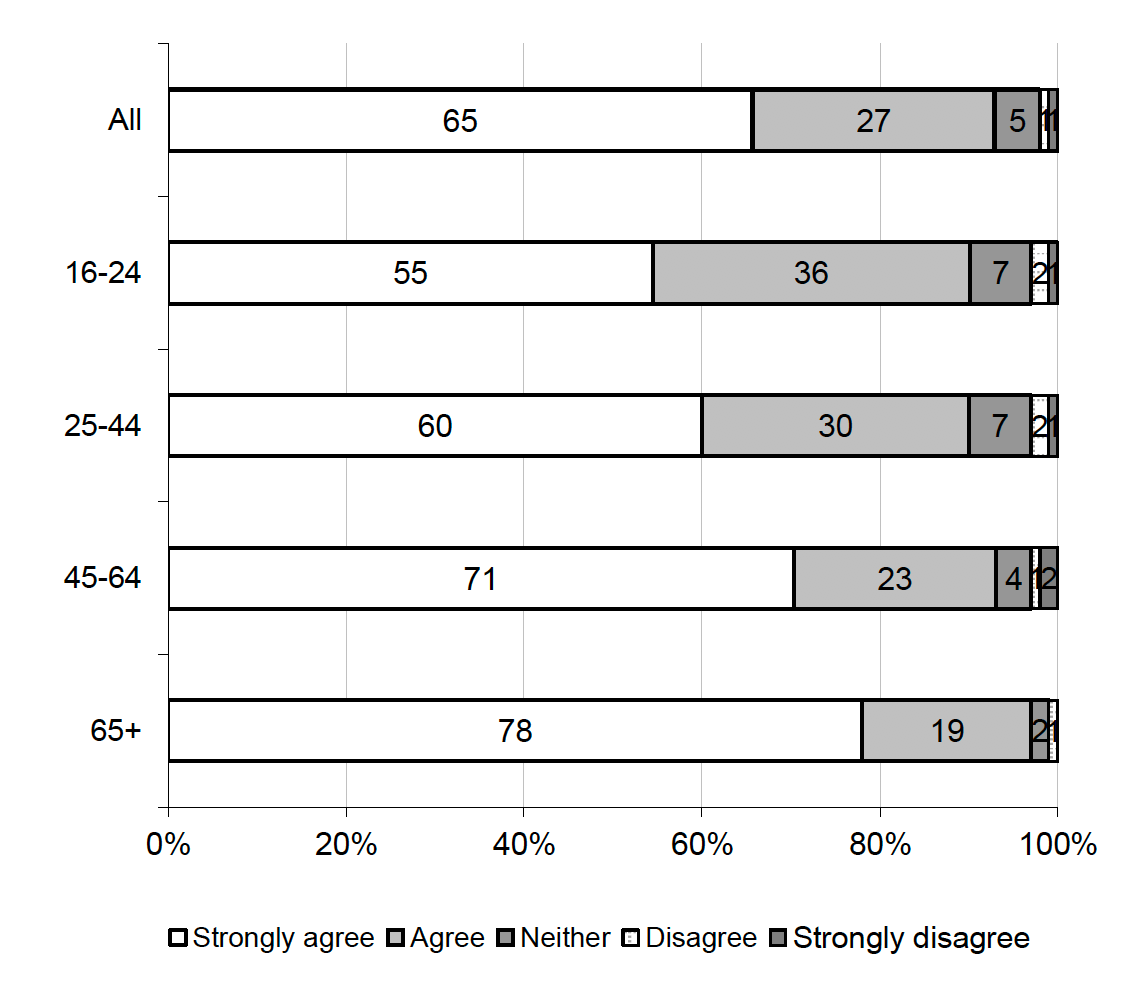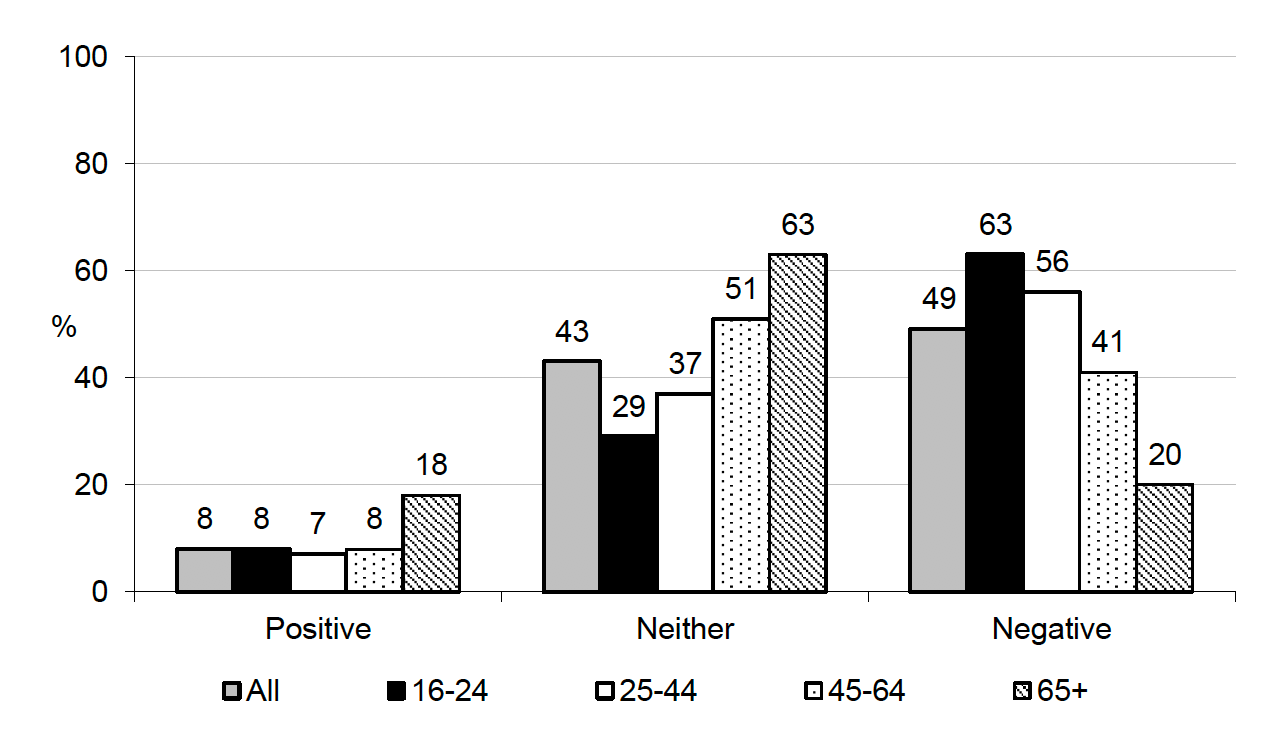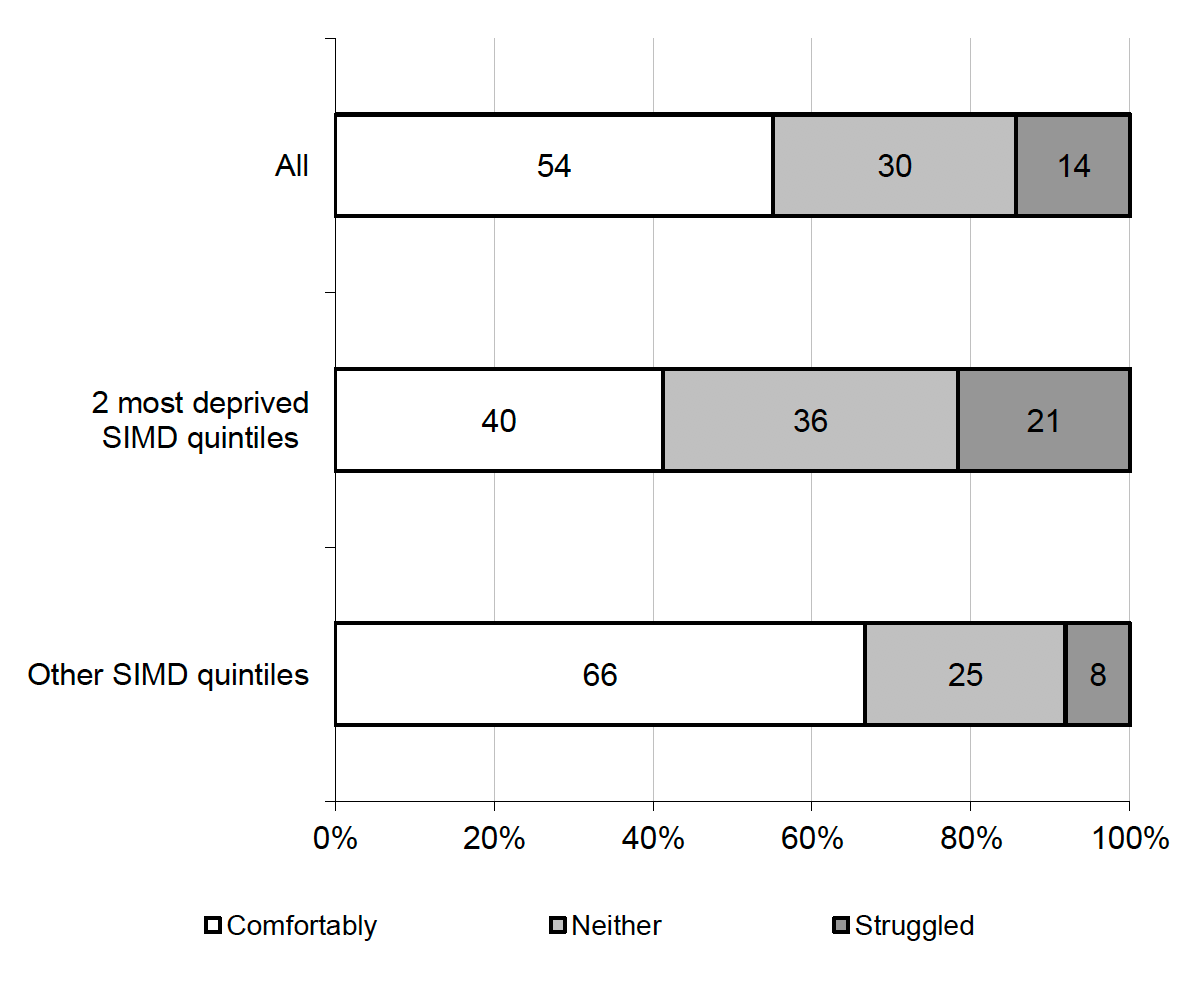Coronavirus (COVID-19) support study experiences of and compliance with self-isolation: main report
This research explores compliance with and experiences of the 10 day period of self-isolation undertaken by index cases, contact cases, and international travellers during the COVID-19 pandemic. The research took place between March and June 2021.
This document is part of a collection
5. Attitudes & experiences of self-isolation
5.1 Background
The Test and Protect Programme[46] supports Scotland's Test, Trace, Isolate, Support strategy through the identification of positive cases via testing, identifying and tracing close contacts and supporting those asked to self-isolate to do so, reducing the potential for transmission to others. Such an approach is a well-established response to the suppression of transmissible diseases, however, there is the potential for variation in levels of buy-in to this approach across the population, as as result of differing attitudes towards self-isolation but also in some cases, influenced by individual experiences.
This study aimed to understand more about attitudes towards the effectiveness of the self-isolation strategy, views on the role of individual agency in deciding whether to self-isolate or not, the impact of self-isolation on individuals and their families (particularly in regards to their mental health and finances), as well as how attitudes and experiences may vary by case type and other population sub-groups.
5.2 Index and Contact Case participants' attitudes and experiences of self-isolation
5.2.1 Views on the effectiveness of the self-isolation strategy as a means of helping prevent the spread of COVID-19[47]
Index and Contact Case survey particiants were asked about their attitudes towards the self-isolation strategy. When asked the extent to which they agreed that 'self-isolation is an effective way to help prevent the spread of COVID-19' agreement was high, with 92% of participants agreeing/strongly agreeing with the statement. Views on the effectiveness of the strategy did not vary significantly by case type. Those fully compliant with their own self-isolation were more likely than those partially complying to strongly agree with the statement (67% and 58%, respectively).[48] [Figure 5.1, Table 5.1] It should be borne in mind that those more supportive and convinced of the effectiveness of the strategy were more likely to opt in to the survey.

While agreement with the effectiveness of the strategy was high across all age groups (90-97%), younger people were less likely than others to agree that it would help prevent the spread of COVID-19. This difference was most pronounced with regards the proportion in each age group that 'strongly agreed' with the statement. [Table 5.1]
5.2.2 Views on where decision-making around self-isolation should lie
Survey participants were also asked the extent to which they agreed that 'it should be up to the individual, not the government, to decide whether they need to self-isolate or not'. Most (83%) did not agree that it should be up to the individual, while less than one in ten (8%) agreed that it should. Similar proportions of Index Case participants and Contact Cases disagreeed that the individual should be able to decide whether to self-isolate or not (85% compared with 81%). [Table 5.2]
5.2.3 Views on the impact of self-isolation on mental health
When asked about the impact self-isolating had on their own mental health, around half of all Index and Contact Case survey participants reported a negative impact (49%), 8% reported a positive impact and 43% neither a positive nor negative impact (43%). Perceptions did not vary significantly by case type. [Figure 5.2, Table 5.3]

Young people were more likely than others to report that self-isolation impacted on their mental health negatively (63% of those aged 16-24, compared with 56% of those aged 25-44, 41% of those aged 45-64 and 20% of those aged 65 and over. [Figure 5.2, Table 5.3]
Those with previous experience of self-isolation were more likely than those with no prior experience to report that the experience impacted negatively on their mental health (58% and 47%, respectively). [Table 5.3]
See Chapter 8 for findings on financial support needs, impact of self-isolation on the mental health of participants and access to informal support.
5.2.4 Perceived financial hardship during self-isolation
Just over half (54%) of participants reported managing 'comfortably' on their household's income during self-isolation with IndexCases more likely than Contact Case participants to do so. In line with survey evidence from general population surveys[49],[50],[51], perceived financial hardship was higher among those on lower household incomes (32% among those with a household income of <=£16,900 compared with 10% of those on higher incomes) and those living in areas of greater deprivation (21% of those living in the two most deprived SIMD quintiles compared to 8% of those living elsewhere). [Figure 5.3, Table 5.4]

Young people were most likely to report struggling financially (17% among those aged 16-24 and 25-44, compared to 11% of those aged 45-64 and 1% of those aged 65 and over). [Table 5.4]
5.2.5 Impact of self-isolating on finances
Survey participants were presented with a list of possible ways that self-isolating could impact upon a person's finances and were asked to identify which, if any, applied to them. The most commonly mentioned impact was paying for online deliveries they wouldn't normally have needed (54%) and 47% reported paying more for groceries than they normally would have needed. Financial implications linked to working and earning potential were also mentioned frequently with 25% reporting lost income and 18% indicating that they were likely to lose their job or miss out on work as a result of self-isolating. [Figure 5.4, Table 5.5]
| Finances impacted by self-isolation | All Index & Contact Case participants | Index Case participants | Contact Case participants |
|---|---|---|---|
| Likely to lose my job/miss out on work | 18% | 18% | 17% |
| Paid for online deliveries wouldn't normally have needed | 54% | 61% | 48% |
| Paid more for groceries than I would normally | 47% | 50% | 45% |
| Lost income | 25% | 26% | 24% |
| Paid for a dog walker | 5% | 4% | 5% |
| Impact finances in another way | 19% | 19% | 18% |
| Base | 1,950 | 851 | 1,099 |
The only noticeable difference by case type was that Index Cases were more likely than Contact Cases to report paying for online deliveries that they would not normally be needed (61% and 48% respectively). [Table 5.5]
Index and Contact Case participants most likely to mention that self-isolation had impacted their employment, income and/or paying more for groceries included those aged 16-24[52], those with a household income of <£16,900 and those living in the two most deprived SIMD quintiles.
Contact
Email: socialresearch@gov.scot
There is a problem
Thanks for your feedback